Nathan Sivagananathan is the South Asia regional honoree for the 2021 YPO Global Impact Award. The award focuses on YPO members making an impact outside the organization that is both sustainable and scalable, affecting people, prosperity, peace or our planet.
Since opening its doors in 2014, the Tellippalai Trail Cancer Hospital in northern Sri Lanka has treated more than 250,000 people. The first of its kind in the previously war-torn northern region of the island nation, the hospital was the brainchild of two friends – YPO member Nathan Sivagananathan and Sarinda Unamboowe. The pair wanted to help patients battling cancer in Sri Lanka and to heal the country after its decades-long civil war.
—–
Through their organization, Trail, the friends led two cross-country fundraising walks. The first was in 2011 to build the Tellippalai Trail Cancer Hospital in the north, and the second was in 2016, which they expect to complete in 2023. The 2011 walk ran more than 670 km (416 miles) from the country’s southern-most point to the northern-most. The 2016 walk ran in reverse from north to south.
For Sivagananathan, however, the journey began with personal and collective loss. After studying and working in the U.K. for several years, he returned home to Sri Lanka with a heavy heart. His sister had succumbed to cancer in 2006 after a four-year battle. Her doctors in England, together with Sivagananathan and friends and family, had sought out bone marrow matches from nearly 1,000 people. Because there were no testing facilities in Sri Lanka, they had to take those samples by plane to Delhi, India, in a multi-country search for a life-saving match. Despite their efforts, a match for her was never found.
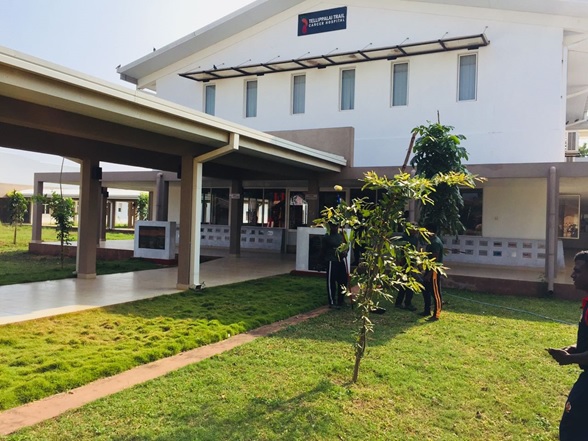
The eldest of four siblings and eight years his senior, his sister had been like a second mother to him, and her loss was deeply emotional for him. At the time he was also working with a multinational apparel company and was becoming increasingly aware of some of the challenges faced by Sri Lankans, including the lack of access to health care facilities.
Looking to learn more, Sivagananathan toured the country’s only hospital that specialized in cancer treatment, the National Cancer Institute, located in the densely populated Western Province of Sri Lanka with a steadily increasing incidence of cancer. There he saw people sharing beds due to lack of space, people recovering from surgery in corridors, and no intensive care unit (ICU) or specialized medical equipment. To compound an already dire situation, most families had to make long and difficult journeys from distant parts of the country, with some even having to travel by boat to get to the hospital.
“We were seeing people giving up everything they had and coming here with a little bit of money and trying to make sure that their loved ones survived,” he says.
He continues, “That was tough. Especially when you see children in the pediatric unit with their parents, both not working, giving up everything and trying to get their child treated. That was the moment where I said, ‘Okay, we need to help and create more capacity through better treatment facilities.’”
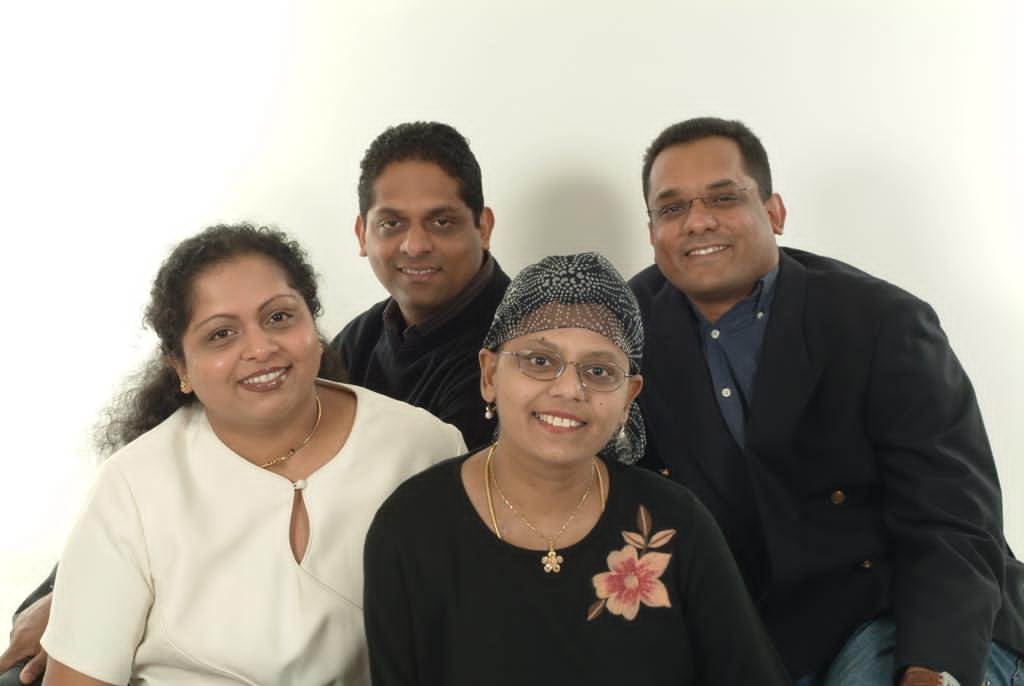
While Sivagananathan and his family worked through their grief, their country was working through its own losses, too. Sri Lanka was in the final throes of a decades-long civil war, in which a rebel terrorist group waged an insurgency against the Sri Lankan government and had a stronghold in the north and northeast regions. In its wake, the war had left physical destruction, emotional trauma and deep cultural rifts.
So, when Sivagananathan’s close friend, Unamboowe, casually proposed a trek from the country’s southernmost end to the northernmost point during one particularly long, leisurely evening, it was cultural healing – not health care – that he had in mind. But when the war did finally end, in 2009, Sivagananathan suggested they also use the trek as an opportunity to raise funds for a pediatric unit for cancer patients in the north. The region had been hard hit due to the war and was struggling to recover. The walk, then, could serve a dual purpose.

Obstacles and opportunities
“This was a difficult time in the country,” he says. “We thought it was a great idea for people in the south to contribute to the north. We just thought we’d go and just reach out to our corporate contacts for funds.”
Despite its simplicity, their idea was decidedly radical. Since the war had begun in the early 1980s, no civilians had dared cross faction lines.
“I couldn’t even count the number of companies that just shut the door on our faces and said, ‘You guys are crazy,’” Sivagananathan says. “Mentally it was straining, and a massive burst of a bubble for all of us involved.”
— Nathan Sivagananathan, Founder of Trail Sri Lanka share
Faced with such persistent opposition, the friends had to change tactics. It was when Sivagananathan was on a trip to Ohio in the U.S., that he came across another approach. His trip coincided with the annual fundraiser in which individuals secured donations for bike rides to benefit a local cancer-treatment hospital. Sivagananathan saw the potential for his project in Sri Lanka.
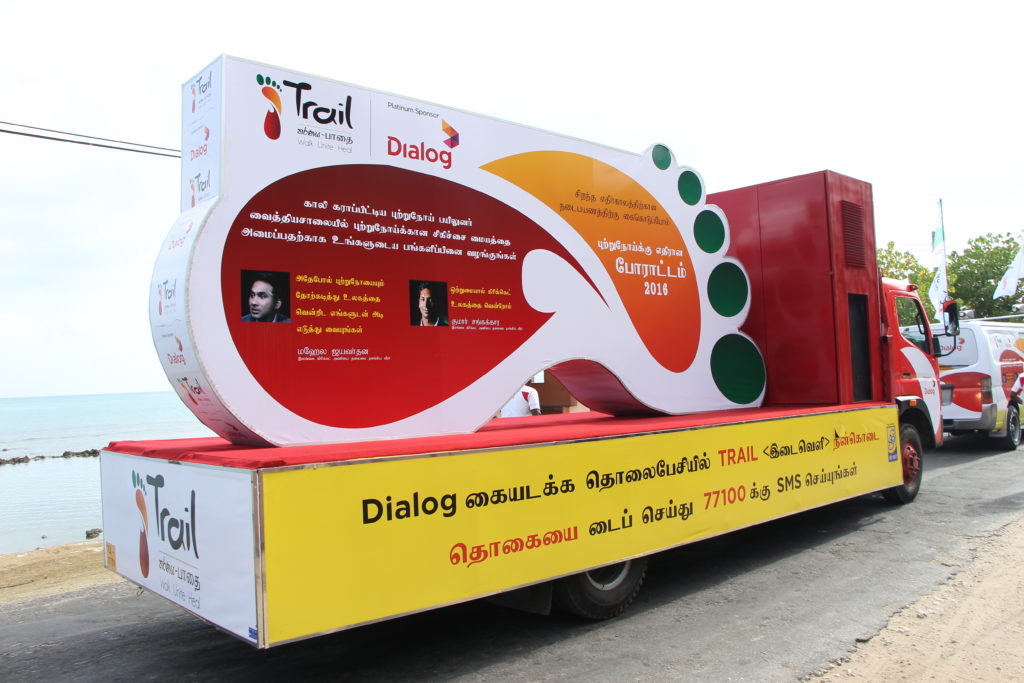
When he returned home, he and Unamboowe set about replicating and adapting the Ohio model. They began to invite others to join them on their trek to raise money, expecting that at best, around 50 people might sign up. Instead, thousands were signing up daily to walk in person or to donate funds through what they called a “virtual walk.”
Recognizing the limitations of digital access, in addition to promotion on social media they advertised with donated air time and space on the radio, in newspapers and on TV. Plus, they created opportunities to contribute through physical events, like bake sales, and a buy-a-brick program, which allowed people to make a meaningful contribution no matter the amount of money.
“Every person who bought a brick had their name added to a wall listing every contributor,” says Sivagananathan. “We wanted many, many thousands of people to be able to say, ‘I was part of building that hospital.’”
Opposition to their concept, though, had not completely disappeared. While Unamboowe galvanized extensive support, they also received death threats and had to bring in donated security services to ensure a safe walk. The setbacks they faced forced them to reschedule the first-ever Trail trek three times before they could finally run the event, in 2011. In total, more than 30,000 joined the first event.
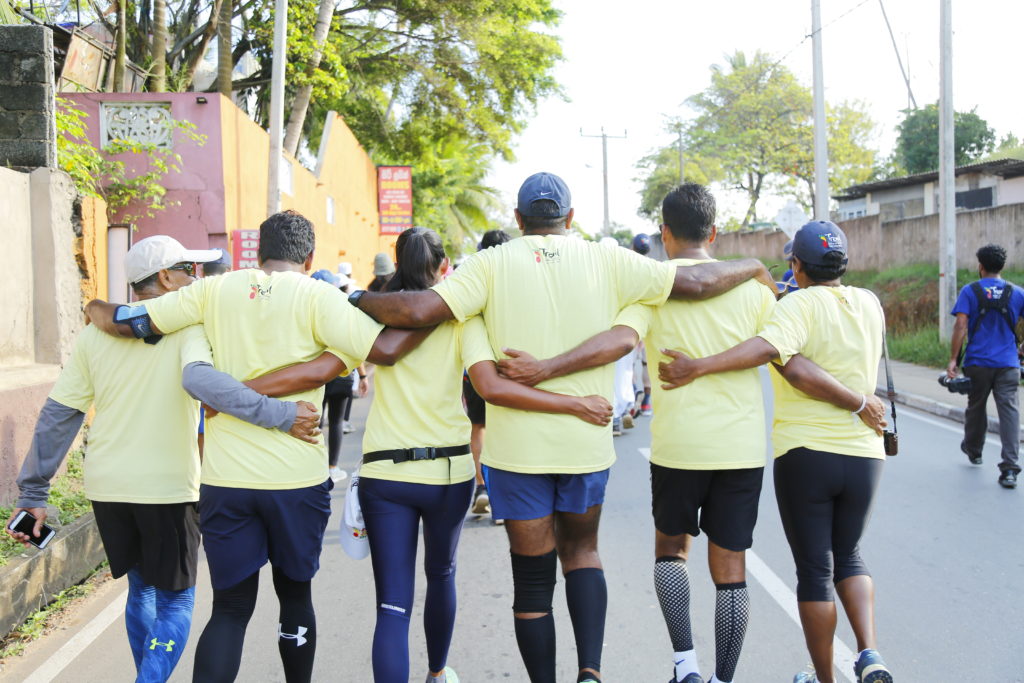
Leadership growth
Along the way, both men had to cultivate new skills both as creative fundraisers and as leaders who were stepping into the spotlight.
“We were never public speakers,” says Sivagananathan. “We were never in front of cameras and had to learn how to do that and not be shy.”
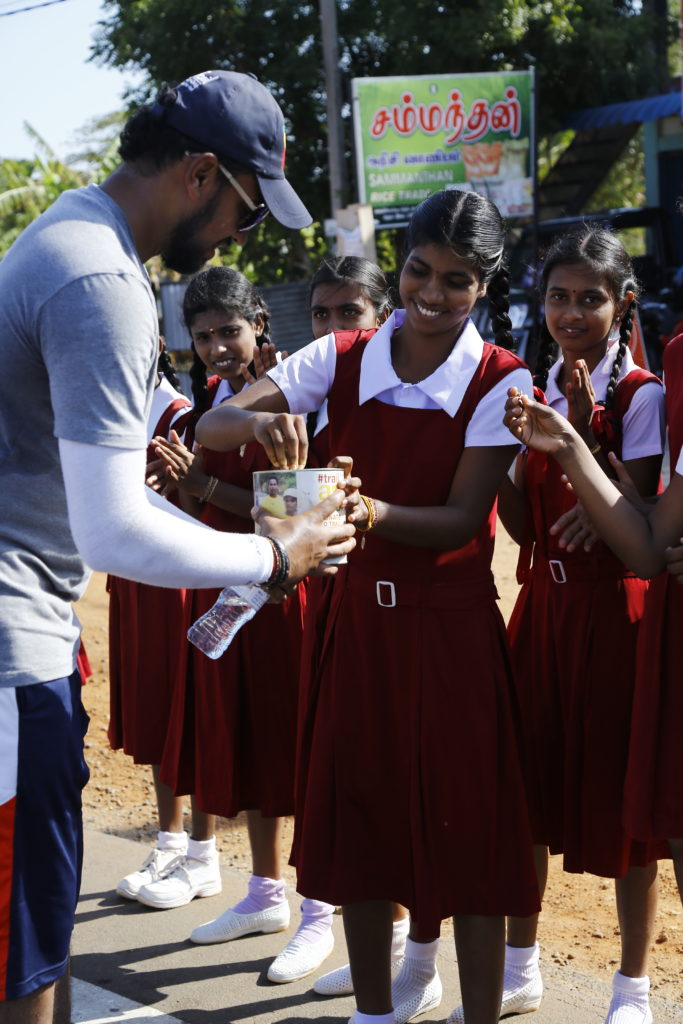
There was something else, too. Sivagananathan was by then a corporate leader, in charge of tens of thousands of staff. Asking for money, purely for charity, was new. The experience, he says, “spoke to how humble you have to be to be able to ask others to help you. We basically went hat in hand to individuals and companies looking for funds.”
His lessons in charitable giving and humility continued during his trek. Throughout the first trek, in 2011, he repeatedly encountered acts of immense generosity. In one case, he recalls how young girls in extremely impoverished communities gave the few coins they had, their piggy bank funds, possibly collected over years, to help the cause.
“We were walking toward the war-torn area in the north,” he says. “It was very early morning and at that time there were a lot of tents because UNHCR (United Nations High Commissioner for Refugees) and other NGOs (nongovernmental organizations) had started relocating people back into their lands. There were these three girls who stood on the side of the road, no shoes, torn clothes. These girls couldn’t even afford to have a proper meal, and they had a dollar in their hand to give to the charity. So, that was a very emotional moment for us, because people who couldn’t afford to have a day’s living were actually giving for the betterment of the region.”
“There were so many more moments like that,” says Sivagananathan, “that really showed us that people were very generous.” Throughout that first walk, which lasted 27 days, Trail raised USD60,000 just from handouts along the route and a total of USD2.6 million by the end of the initiative. That enabled them to build a specialized cancer hospital with both adult and pediatric wards and an array of treatment options, surpassing their initial goal of building only a pediatric unit. During the second walk in 2016, which was more focused on unity, more than 2.5 million people joined – more than one-tenth of the country’s population. That experience, like the first, had a profound effect.
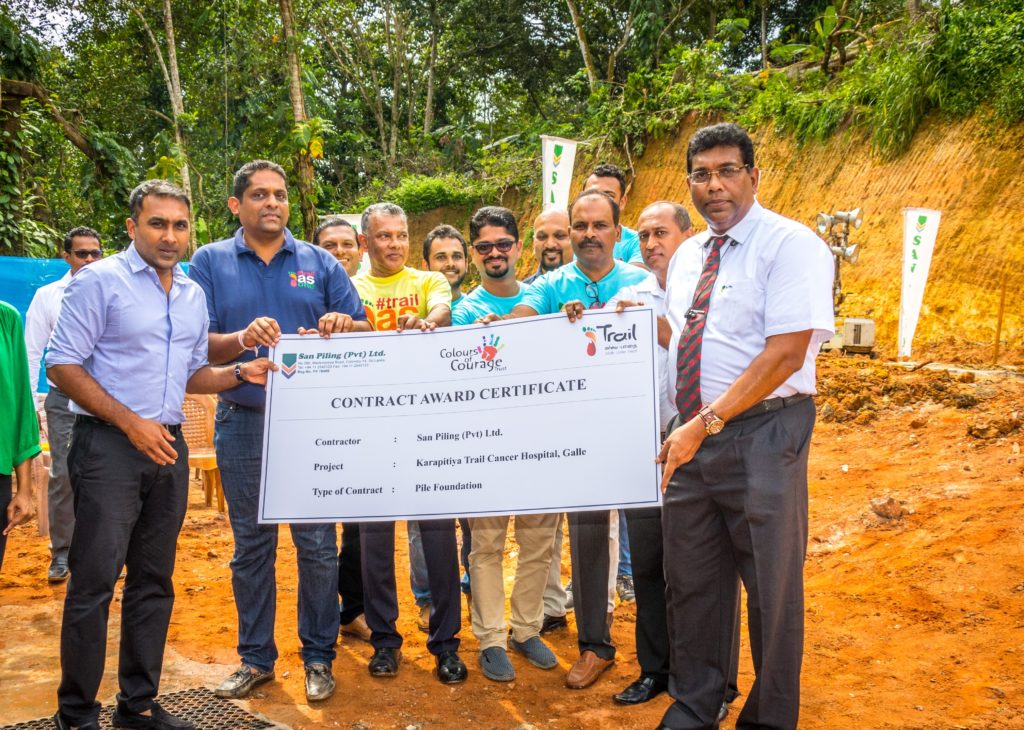
“We would be walking past a school and all the school kids would be out, applauding and whistling and contributing,” he recalls. “The streets were lined with people encouraging all the walkers and giving out bananas and fruit and drinks. Those moments are very difficult to explain in words, but you just know that you’ve done something that’s going to impact people’s lives.”
Lessons for leaders
Along the way, Sivagananathan learned a lot about himself and humanity as well as how to take on a meaningful cause. He has some advice for fellow CEOs who might want to follow in his footsteps (so to speak):
- The world is generous. You will find support for your cause. Sivagananathan, being an entrepreneur as well, compares it to investing in startups. “If you’ve got a good idea and feel passionate about it, you will find the money. And if you’ve got that same thing in impact or a charitable cause, you may have to dig a little deeper to find it, but you will find little ways through which people can and are willing to support you.”
- Build a support structure around you. Sivagananathan was able to create Trail in part because he learned to motivate people to join him. But his team motivated him, too. There were days during the 27-day journey he had painful blisters, felt tired and wanted to stop walking, but the people around him kept him going, in no uncertain terms. “One of my mentors said, ‘I will put you on a donkey and make sure that you get to the north,’” he recalls.
- Don’t give up on your mission. When their attempts to find corporate sponsors fell flat, Trail’s founders were forced to reschedule the first Trail trek three times. But finally, they reached their goal. “You get knocked down,” says Sivagananathan, “and then you just have to get up and look at the next thing that you need to do.”
The future of Trail
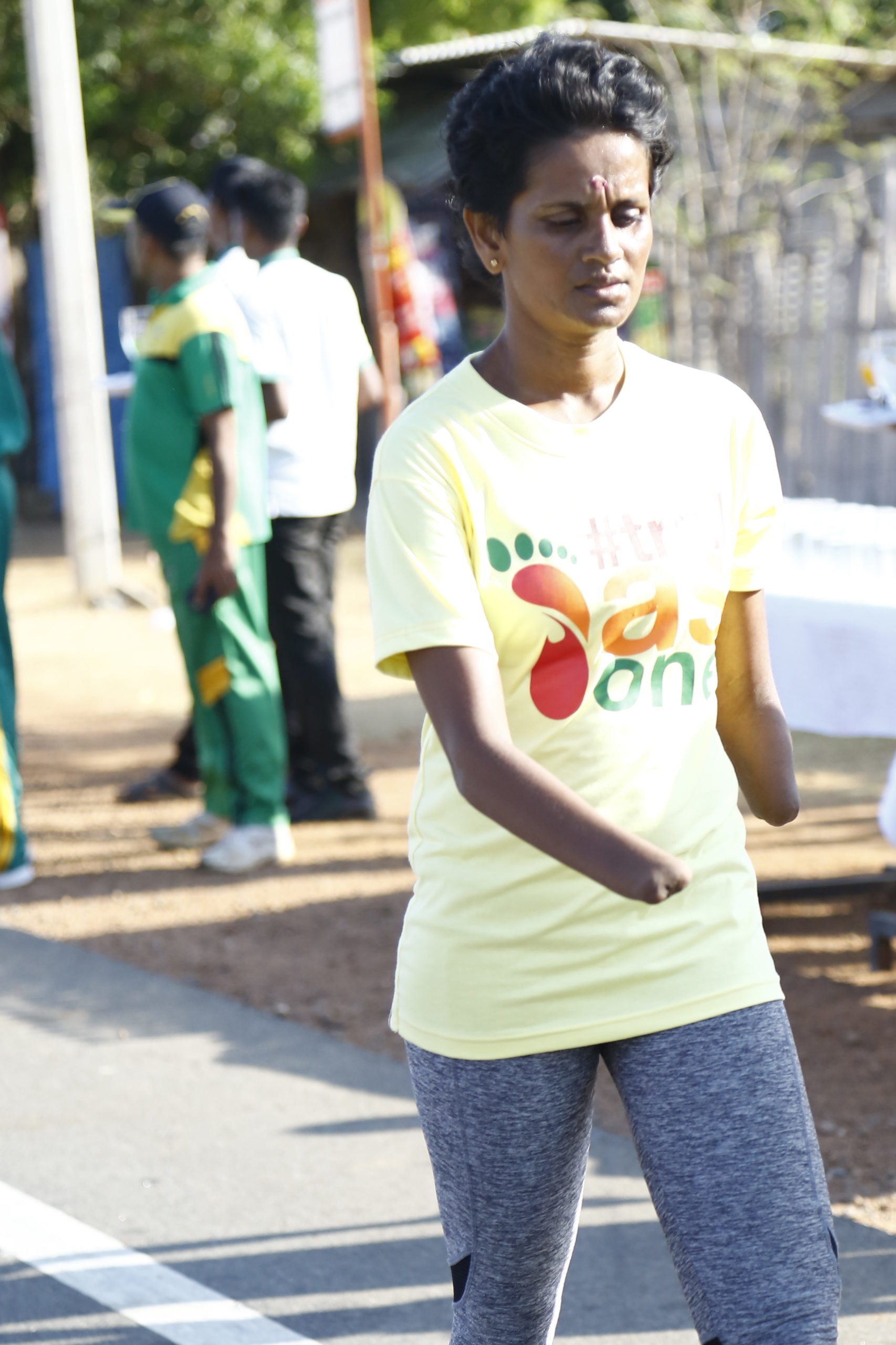
Since their 2016 trek, Sivagananathan and Unamboowe have continued to support the growth and health of Sri Lanka through a number of avenues, including a second Trail Cancer Hospital, in the south. Their efforts and the construction of the hospitals is funded through crowdfunding and key sponsorships.
In addition to the new facility, they created more than 100,000 booklets on cancer awareness and health habits for the general public. Their hope is to provide more education about cancer, more testing capabilities and more cancer-related services throughout Sri Lanka. Among the services Sivagananathan envisions is a bone marrow registry, which was the original impetus for his work.
To further support cancer patients and their families, Trail also built transit lodging in the north for those who still have to travel far from home to the Tellippalai Trail Cancer Hospital for treatment. The lodging allows people to stay close to the hospital and offers more support for each patient. In the meantime, through their corporate standing, Sivagananathan and Unamboowe lobbied Victoria’s Secret and Nike to build new factories in Sri Lanka’s northern region. The move created more than 7,000 jobs in the north for those affected by the war, and for Sivagananathan, this was another powerful example of how entrepreneurs can create positive change.
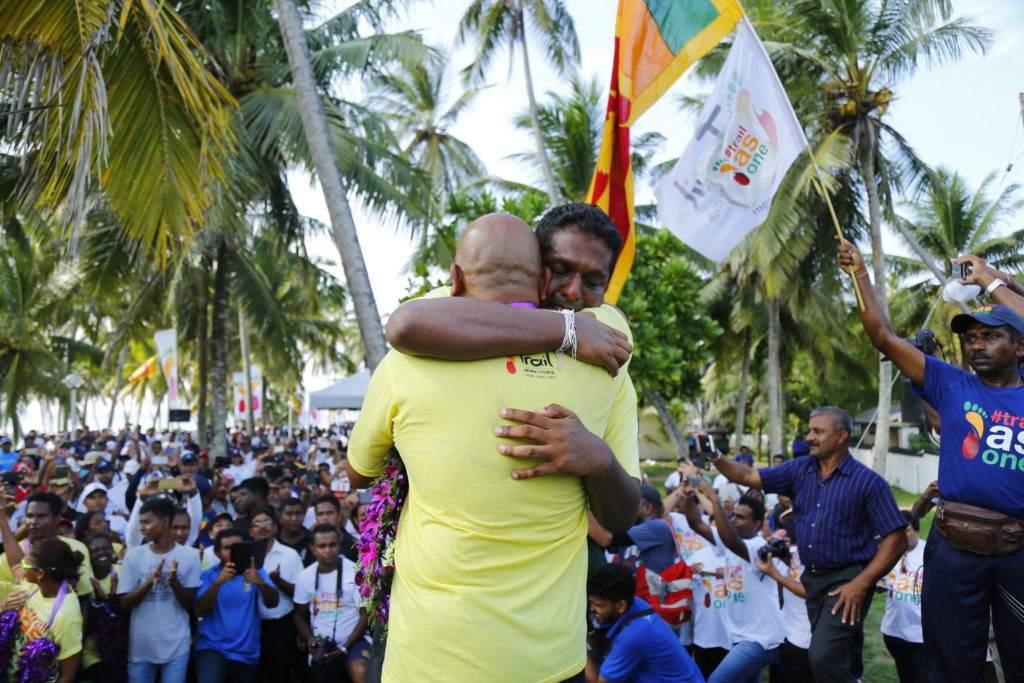
“Trail is testimony to the power of people coming together to bring about positive change,” says Sivagananathan. “Trail is not only a movement to develop the national cancer-care landscape but also a catalyst for intercultural cooperation creating an opportunity for our society to move from a divided past to a shared future.”



